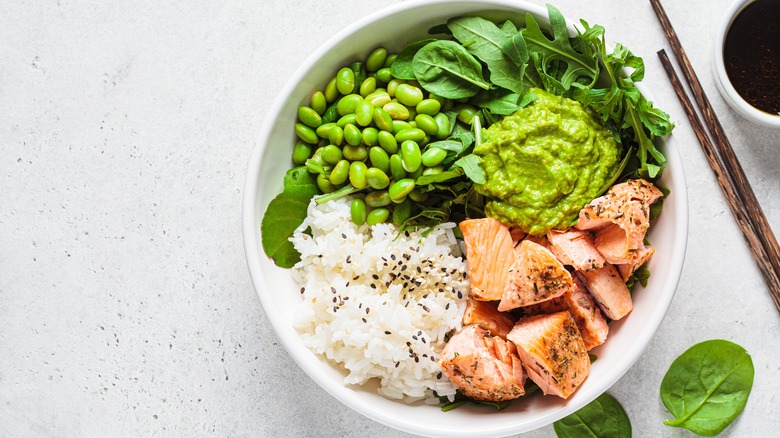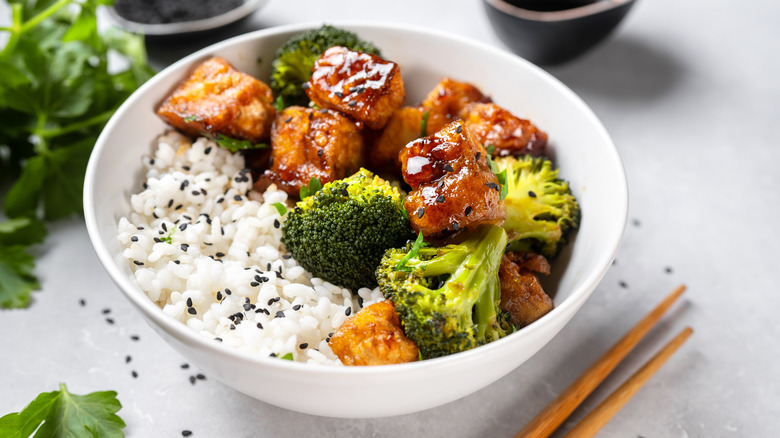The Biggest Mistake You're Probably Making With Rice Bowls
There's a reason why rice is one of the world's most popular grains (via National Geographic). Not only does it provide a good source of calories for many people, but it's also celebrated as a sacred grain in festivals, per BFF Asian Grill. Such tiny pillows of fluffiness aren't just seen as a side dish though. Instead, they can be utilized in recipes like lobster risotto, fried rice, and rice bowls.
Rice bowls, in particular, showcase tons of proteins, vegetables, and seasonings. You've probably seen these at Panda Express, but Chipotle and many Korean restaurants have their own variations of the rice bowl, namely, with burrito bowls and bibimbap, respectively. To that, rice bowls look quite different across the globe, as each country puts its own spin on a bed of rice with stuff on top. Chinese cooking typically incorporates stir-fried veggies and meats, while Japan utilizes sashimi, fried tempura, and dashi-steamed eggs. And if you're a vegetarian, you'll likely gravitate towards buddha bowls that highlight an array of colorful and crunchy vegetables, per MasterClass.
Whipping up rice bowls at home is relatively easy, but as with any dish, the potential for mistakes is always on the table. Here's one of the major "don'ts" of rice bowls and how you can make them even better.
Easy with the toppings
Let's remember that this is a rice bowl, not a "toppings" bowl. Sure, the rice serves as the foundation for such toppings, but as Serious Eats notes, it's like the main cast member in the show. The toppings should be there to support the rice, not take the spotlight away. Thus, it's best to go easy on the toppings. Washington State University offers a handy guide on how to build a proper rice bowl, explaining that one serving should consist of a half cup of rice, one cup of vegetables, and two or three ounces of protein.
That being said, if you're going to use fewer toppings, it's important to be more assertive with the seasonings. As Serious Eats explains, the rice itself doesn't offer much in terms of flavor, so the rice bowl as a whole relies on the seasoning department for help. And we're not just talking about salt, but other flavorings like soy sauce, lemon pepper, peanut sauce, or hot sauce for a kick. You could also sprinkle some cheese, toasted nuts, or a seasoning blend on top.
So next time you're making a rice bowl, try to refrain from adding a heaping pile of toppings over the rice. Doing so will show respect for the rice and highlight the few (but well-seasoned) toppings even better.

